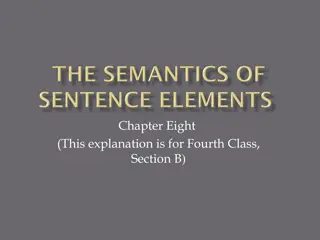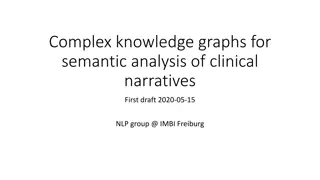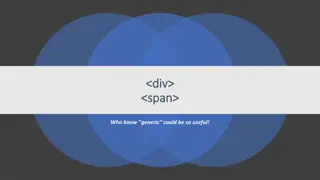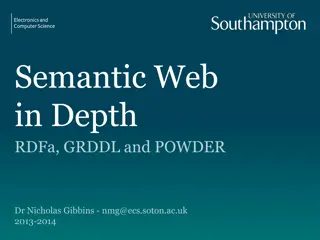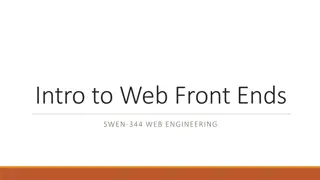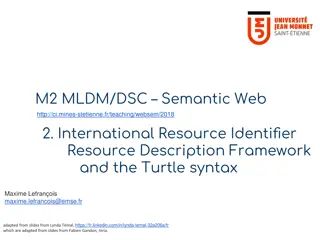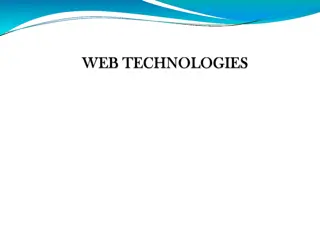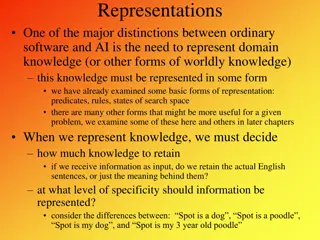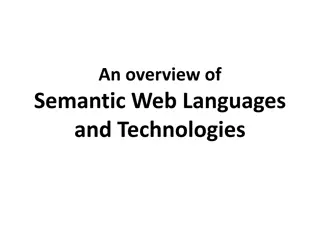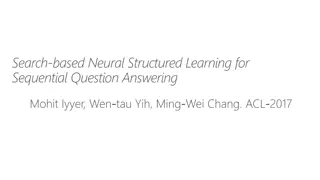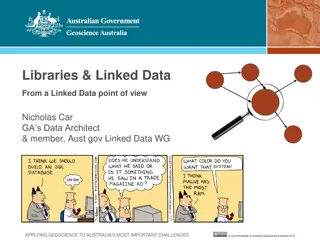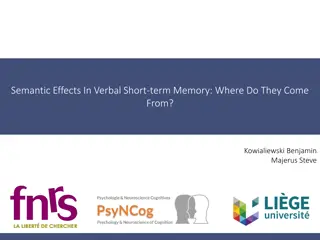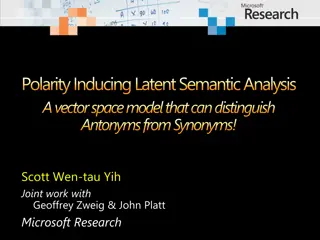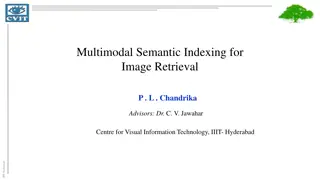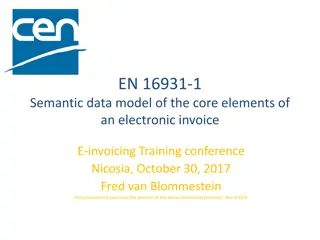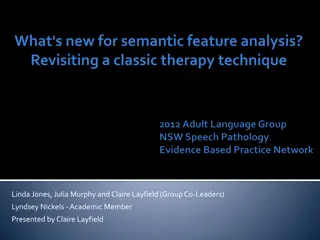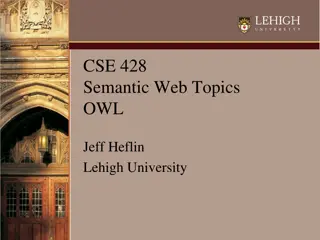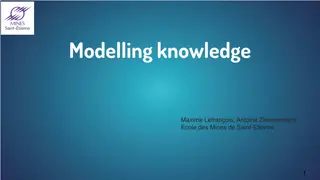Knowledge Representation in Semantic Web Technologies
Knowledge representation is central to the Semantic Web, ensuring structured and organized data. Common approaches include logic, production rules, semantic networks, and frames. Symbolic AI and SW systems consist of a knowledge base and inference mechanism for problem-solving. Ontologies play a crucial role in the Semantic Web by providing a shared understanding through engineered artifacts with specific vocabularies.
Download Presentation

Please find below an Image/Link to download the presentation.
The content on the website is provided AS IS for your information and personal use only. It may not be sold, licensed, or shared on other websites without obtaining consent from the author. Download presentation by click this link. If you encounter any issues during the download, it is possible that the publisher has removed the file from their server.
E N D
Presentation Transcript
Ontologies COMP6215 Semantic Web Technologies Dr Nicholas Gibbins nmg@ecs.soton.ac.uk
Knowledge Representation Knowledge representation is central to the Semantic Web Data published on the Semantic Web must be structured and organised Long-standing concern in symbolic Artificial Intelligence A good knowledge representation naturally represents a given problem domain A poor knowledge representation is unintelligible 3 3
Knowledge Representation Common KR approaches: Logic Production rules Semantic Networks Frames The Semantic Web combines aspects of all of these schemes 4 4
Knowledge Representation Most symbolic AI systems (and therefore SW systems) consist of: A knowledge base (KB) Forms the system's intelligence source Structured according to the knowledge representation approach taken An inference mechanism Set of procedures that are used to examine the knowledge base to answer questions, solve problems or make decisions within the domain 5 5
Defining the O word Ontology, n. 1. a. Philos. The science or study of being; that branch of metaphysics concerned with the nature or essence of being or existence. Oxford English Dictionary, 2004 7
Defining the O word An ontology is a specification of a conceptualisation Specification: A formal description Conceptualisation: The objects, concepts, and other entities that are assumed to always exist in some area of interest and the relationships that hold among them Referred to in the philosophical literature as Formal Ontology T. R. Gruber. A translation approach to portable ontologies. Knowledge Acquisition, 5(2):199-220, 1993 N. Guarino, D. Oberle, S. Staab. What is an ontology? In: S. Staab & R. Studer (eds.). Handbook on Ontologies. 2nd revised edition. Springer, 2009. 8 8
Ontology in Computer Science Ontologies as engineered artifacts: constituted by a specific vocabulary used to describe a certain reality, plus a set of explicit assumptions regarding the intended meaning of the vocabulary Benefits: Shared understanding Facilitate communication Establish a joint terminology for a community of interest Normative models Inter-operability: sharing and reuse 9 9
Ontology Structure Ontologies typically have two distinct components: Names for important concepts in the domain Animal, Elephant, Adult_Elephant, African_Elephant, Herbivore, etc Background knowledge/constraints on the domain Elephants are a kind of Animal Adult_Elephants are Elephants whose age is greater than 20 years Adult_Elephants weigh at least 2,000 kg All Elephants are either African_Elephants or Indian_Elephants Herbivore are exactly those animals who eat only plants or parts of plants No individual can be both a Herbivore and a Carnivore 10 10
Informal Usage Informally, ontology may also be used to describe a number of other types of conceptual specification: Controlled vocabulary Taxonomy Thesaurus Study of ontology is not limited to computer scientists and philosophers Rich tradition of knowledge representation and ontology in library and information science but they talk about classification and metadata instead of ontologies 11 11
Controlled Vocabularies An explicitly enumerated list of terms, each with an unambiguous, non-redundant definition No structure exists between terms A controlled vocabulary is a flat list Examples: Library of Congress Subject Headings (LCSH) Medical Subject Headings (MeSH) 12 12
Taxonomies A collection of controlled vocabulary terms organised into a hierarchical structure Each term is in one or more parent-child relationships May be several different types of parent-child relationship: Type-instance Genus-species Part-whole (referred to as meronymy) Examples: Library classification schemes: Library of Congress, Dewey Decimal, UDC Linnean Classification (Kingdom, Phylum, Class, Order, Family, Genus, Species, Subspecies) MeSH Tree Structures 13 13
Taxonomy Examples Dewey Decimal 5xx - Natural Sciences and Mathematics 53x - Physics 537 - Electricity and Electronics Library of Congress Q - Science QA - Mathematics QA71-90 - Instruments and machines QA75-76.95 - Calculating machines QA75.5-76.95 - Electronic computers and computer science QA76-76.765 - Computer software 14 14
Thesauri A thesaurus is a taxonomy with additional relations showing lateral connections Related Term (RT) See Also Parent-child relation usually described in terms of Broader Terms (BT) and Narrower Terms (NT) Thesauri also typically contain scope notes which define the meaning of a term 15 15
Thesaurus Example Apples Scope notes: Broader term: Related terms: Narrower terms: See also: Use: The fruit of any member of the species Malus pumila Foodstuffs Cooking Ingredients Taxable Foodstuffs Horticulture Granny Smiths Apple Trees For Apple computers use Personal Computers (Apple) 16 16
Ontology An ontology further specialises relationship types (particularly related term) An ontology typically includes: Class definitions and hierarchy Relation definitions and hierarchy An ontology may also include the following: Constraints Axioms Rule-based knowledge 17 17
Summary Controlled Vocabulary + Hierarchy = Taxonomy Taxonomy + lateral relations = Thesaurus Thesaurus + typed relations + constraints + rules + axioms = Ontology 18 18
Further Reading N. Guarino, D. Oberle, S. Staab. What is an ontology?In: S. Staab & R. Studer. Handbook on Ontologies. 2nd revised edition. Springer, 2009. https://link.springer.com/chapter/10.1007%2F978-3-540-92673-3_0 https://userpages.uni-koblenz.de/~staab/Research/Publications/2009/handbookEdition2/what-is-an- ontology.pdf 19

 undefined
undefined